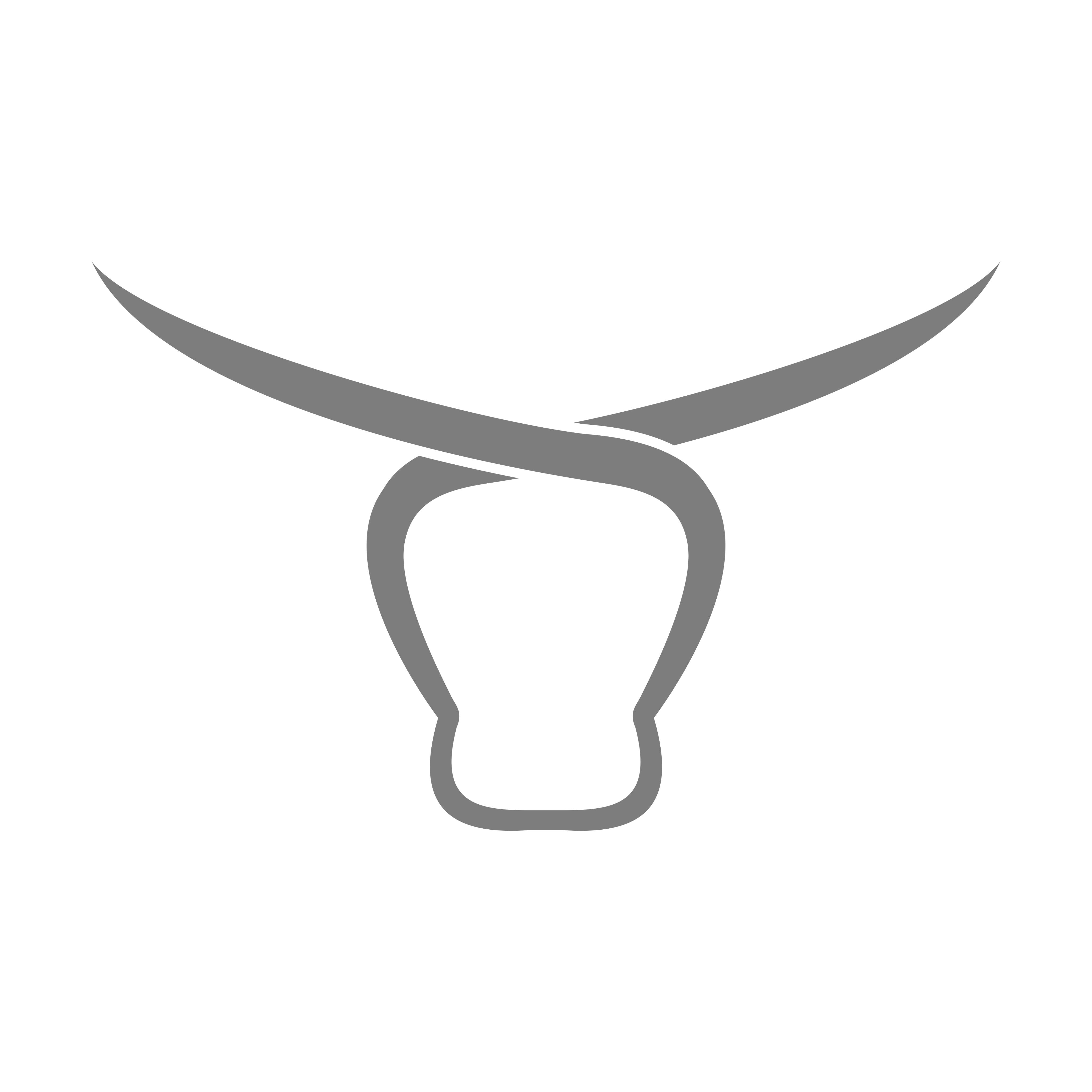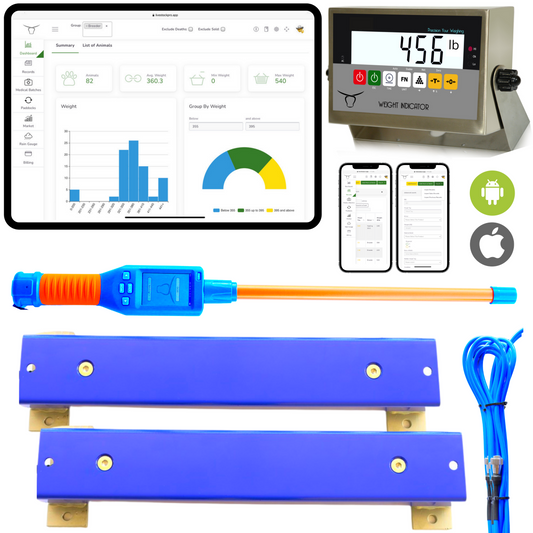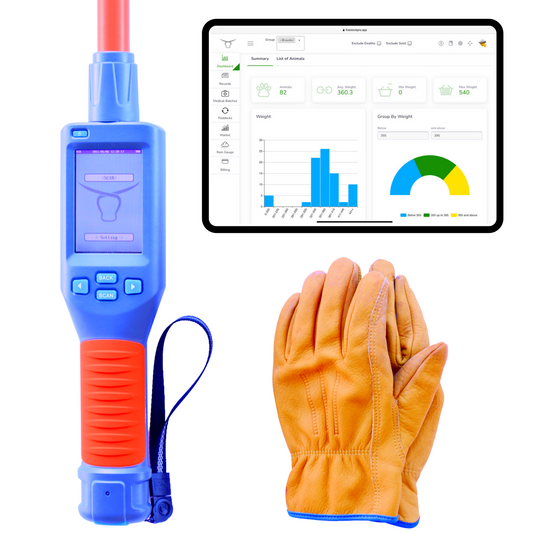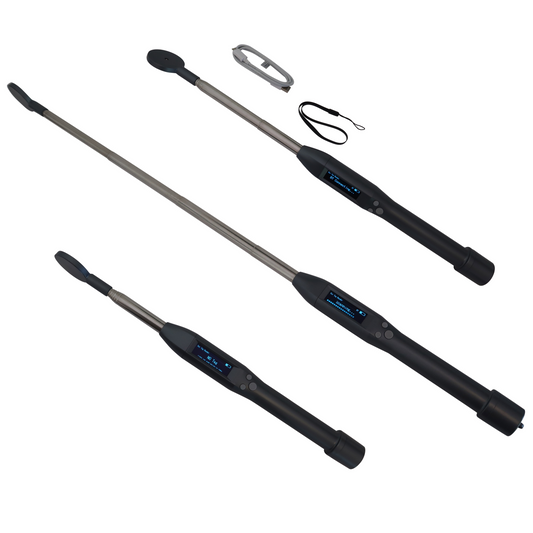Understanding Cattle Scales
As a rancher, weighing your cattle correctly is important to maximize profits. Frequent weighing helps you track their weight gain, health, and performance. Here are some essential details on using cattle scales effectively:
- Types of Cattle scales include Manual Chute Weighing Scale, Pressurized System Scale, Portable Livestock Scale, and Automatic Sortation System.
- Early morning or evening are the best times to weigh cattle to avoid inaccuracies due to feed or water consumption.
- Prepare the scale area before weighing. Make sure the scale is calibrated and there's enough space for each animal to stand comfortably.
- Install the scales on a level surface away from overhead wires and trees that may interfere with readings.
- Safety is key - use headlocks, gating systems, or restrain animals to avoid accidents.
Good quality scales are necessary, but not the only factor when weighing livestock. Having records and working with a veterinarian can help you interpret factors influencing performance accurately. Make sure to double-check calibration before use. Whether you need a scale for heifers or your prized bull, these types of scales can help!
Types of Cattle Scales
To properly use cattle scales, knowing the types of scales is essential. Mechanical scales and digital scales are the two main types of cattle scales. In this section, we'll explain each type briefly.
Mechanical Scales
Mechanical weighing instruments are a must-have for accurately measuring the weight of cattle. These devices rely on levers, balances, and springs to work. Here's a table with info about the different types of mechanical scales and their range and accuracy:
| Type | Range | Accuracy |
|---|---|---|
| Hanging Scale | Up to 2 tonnes | +/- 1% of total weight |
| Platform Scale | Up to 4 tonnes | +/- 0.5% of total weight |
| Livestock Scale | Up to 9 tonnes | +/- 0.1% of total weight |
Mechanical scales lack features like data recording, connectivity, and tracking which are common with digital scales. To keep accuracy, maintenance is needed, such as calibration checks and service upkeep.
Finally, cows can experience the pleasure of stepping on a digital scale, and seeing their weight in numbers rather than just being judged by their moo-d!
Digital Scales
Digital weighing systems for cattle have revolutionized the livestock industry. These scales are an essential tool for monitoring herd and animal health. They enable accurate weight gain calculations and managing feed efficiency.
For those investing in digital scales, it is crucial to research different models before purchasing one. Reading product reviews and technical specifications is highly recommended.
Bluetooth connectivity, stats tracking and pricing options are all features to consider when choosing the right digital scale. Unparalleled precision in weight readings is what these scales offer.
It's important to ensure regular calibration of these weigh scales. This helps to maximize their potential and also monitor and manage feed consumption of different animals in the herd.
Remember, when selecting the cattle scale, size matters - unless you want inaccurate readings and angry cows.
Choosing the Right Scale
To choose the right cattle scale for your farm, you need to consider factors like your farm size, type of cattle, accuracy, and capacity requirements. This section will help you make an informed decision about which scale is best suited for your needs. We will explore two sub-sections: considerations for farm size and type of cattle, and accuracy and capacity requirements.Considerations for Farm Size and Type of Cattle
Selecting the correct scale for weighing cattle? It depends on the type of cattle and farm size. Ensure accuracy and efficiency when weighing with the right scale!
A table below outlines different considerations for the farm size and cattle type:
| Farm Size | Cattle Type | Scale Type | Accuracy |
|---|---|---|---|
| Small Farms | 10-100 cattle, calves, and weanlings | Portable/stationary scale | +/-1%-3% accuracy |
| Medium Farms | 100-500 cattle, yearlings and breeding | Stationary scale | +/-0.5%-1% accuracy |
| Large Farms | Over 500 cattle, feedlot & dairy herds | Stationary/multiple scales | +/-0.25%-0.5% accuracy |
The scale should be suitable for the farm's needs: space, climate, budget, and maintenance. A study by the University of Kentucky Cooperative Extension Service found profits per steer can increase up to $35 with an accurate scale. Pick the right scale to be efficient and maximize profits!
Accuracy and Capacity Requirements
Precision and Capacity Musts:
Precision and capacity are so important when finding the right scale for your needs. Ignoring these two demands can have a negative effect on the accuracy of your weight readings.
The following table shows accurate requirements and capacity of different scale types:
| Scale Type | Accurate Requirement | Capacity Needed |
|---|---|---|
| Kitchen | +/- 1 gram | <5 kg |
| Bathroom | +/- 100 grams | <150 kg |
| Shipping | +/- 0.01 grams | <50 kg |
Before buying, think about the brand's reliability, credibility, availability and cost.
Exemplar Story:
"My friend once got a kitchen scale for her cooking business without considering its accuracy. It ended up being a costly mistake when she realised it wasn't calibrated correctly, making her dishes too inaccurate!"
Take charge and step up to the plate, because setting up your scale is the first step towards accurate living.
Setting Up and Preparing the Scale
To set up and prepare the cattle scale properly, you need to level and calibrate the equipment. Leveling the scale ensures that the measurements are accurate, and calibrating helps to refine the readings. Each of these sub-sections plays a critical role in accurate weigh-ins for your cattle.Leveling the Scale
Leveling the scale is essential to get accurate and precise measurements. Follow these steps to get it right:
- Place on a flat surface.
- Press ON/OFF button.
- Wait at least 30 seconds.
- Press "ZERO" button.
- Center the bubble in the spirit level.
Also, check that all adjustable parts are secure.
Pro Tip: Double-check it's properly leveled before use. That way, you can count on exact readings every time!
Calibrating the Scale
To get accurate measurements from your Scale, it's essential to calibrate it regularly. Here are some simple steps to follow:
- Reset: Press the reset button or remove/insert batteries.
- Weigh with Calibration Weights: Look up your user manual for recommended weights and set it to match.
- Adjust if Needed: If readings aren't accurate, use a small screwdriver to adjust calibration settings.
Make sure the surface you put the scale on is flat and level. Minor shifts can mess up measurements. For best results, only use reliable calibrated weights or known solid masses, not items from around the house like coins or canned food. Variations in their weight over time can give inaccurate measurements.
Finally, store the scale safely when not in use. This will help keep it accurate and make it last longer. Don't stress, just use the scale!
Weighing the Cattle
To weigh your cattle accurately, you need to handle them safely and record their weights. In order to achieve this, the section "Weighing the Cattle" in the article "How to Properly Use Cattle Scales" with sub-sections "Handling Cattle Safely" and "Recording Weights" provides you the best solutions.Handling Cattle Safely
Cattle Handling Best Practices - A Guide
- Prepare facilities ahead of time.
- Stay calm and quiet.
- No sudden movements or loud noises.
- Use the right equipment.
- Sort cattle small groups by size or age.
- Have trained personnel on hand in case of accidents.
- Different breeds and animals have different characteristics.
- Get expert help if handling dangerous animals or unfamiliar situations.
Recording Weights
Documenting the weight of cattle is a must in animal agriculture. Keeping accurate records helps farmers make better decisions. Here's how to do it right:
- Test scales regularly to make sure they're calibrated.
- Separate cattle into groups, considering size, weight, and health.
- Weigh groups from lightest to heaviest.
- Record and save weights quickly.
- Check data for trends that can help with overall performance.
Weighing often is important due to environmental factors such as seasons and feeding.
Documenting weight may seem simple, but there are factors to consider. Make sure scales are reliable, and check the animals' health.
Though most ranchers use electronic scales and software, some old-fashioned farmers still use handwritten ledgers. This shows how important accuracy and attention to detail is. Cleaning the scale is essential - a dirty one yields false results.
Maintaining and Cleaning the Scale
To properly maintain and clean your cattle scale with regular maintenance and cleaning tips as solutions is what this section is about. Keeping your scale clean and well-maintained is crucial to ensure its accuracy and longevity. In this section, we’ll explore two sub-sections: regular maintenance and cleaning tips, which will provide you with all the necessary information to keep your cattle scale in top condition.
Regular Maintenance
For optimal performance and longevity, regular upkeep of the measuring scale is a must. Here are some tips on how to ensure regular maintenance:
- Keep it in a clean and dry environment.
- Wipe the weighing surface with a damp cloth regularly.
- Inspect and clean load cells, which are critical components.
- Schedule calibration checks for accurate readings.
- Replace any broken parts immediately.
- Keep records of maintenance activities for Quality Assurance.
Monitor the general condition of your equipment closely. This will help avoid potential breakdowns and keep it running for longer. According to experts, accurate scales are important for business success. Cleaning the scale is important, use these tips to help win the fight against grime and buildup.
Cleaning Tips
Keep your scale in excellent condition with these tips:
- Wipe it using a soft, damp cloth or sponge after each use.
- Do not use harsh chemicals or abrasives.
- Check for dirt and debris on the platform and feet.
Also, store your scale in a dry place when not in use. Don't forget to inspect the batteries and replace them as needed.
Scientific Reports suggests that by keeping your scale clean and maintained, its accuracy and lifespan will improve. If you're seeing numbers higher than your bank balance, it's time to troubleshoot.
Troubleshooting Common Issues
To troubleshoot common issues that you may encounter while using cattle scales, with a focus on the section of zero errors and sensor malfunction, we present some possible solutions.
Sensor Malfunction
Undetected Signal Disruption is a common issue for sensors. To fix this, make sure the sensor settings match the device and environment. Also, keep sensors away from electronic devices to avoid interference.
For best performance, sensors should be calibrated often. Wiring faults can lead to incorrect results, so check the wiring connections too.
Power supply problems may also cause sensor errors. Use the recommended power supply capacity to avoid low voltage or fluctuating currents.
Pro Tip: Do regular maintenance on sensors and equipment to pick up issues before they get worse. With these tips, you can keep your device running well and error-free!
Conclusion
To make sure measurements are accurate, calibrate the scales and correctly place the load. Additionally, regular maintenance and inspection increase the longevity and effectiveness of the equipment.
Choose the right scale for your needs. Scales that measure live-weight may not be suitable for beef sales weights. Plus, low-stress handlers reduce anxiety for animals. Keep records and track progress by weight. This helps make decisions, like which cow should be sold or used for breeding.
Pro tip: Clean your cattle scale regularly, especially before giving antibiotics, dosages or vaccinations. These can affect an animal's weight due to biological changes.
Frequently Asked Questions
Q: What is the purpose of using cattle scales?
A: Cattle scales are used to accurately measure the weight of cattle before and after sales or transportation, to ensure that they are healthy and receive proper medical care.
Q: How often should I calibrate my cattle scales?
A: It is recommended to calibrate your cattle scales at least once a year, or whenever you make changes to the scale's environment or weighing procedure.
Q: How do I properly clean and maintain my cattle scales?
A: To properly clean and maintain your cattle scales, wipe down the weighing surface with a soft cloth and mild soap solution. Avoid using harsh chemicals or abrasive materials. It is important to also regularly check the scales for any signs of damage or wear.
Q: Can cattle scales be used for weighing other types of animals?
A: Yes, some cattle scales can also be used for weighing other large livestock animals such as horses, sheep, and pigs. However, it is important to check the weight capacity and size of the scales to ensure accurate measurements.
Q: How do I correctly position the cattle on the scales to obtain accurate measurements?
A: Position the cattle on the scale with all four hooves on the weighing surface and ensure that they stay still during the weighing process. It is important to also account for any equipment or handling apparatus used during the weighing process.
Q: Can digital scales be used for weighing cattle?
A: Yes, digital scales can be used for weighing cattle and are often preferred due to their accuracy and ease of use. However, it is important to ensure that the scale has a suitable weight capacity and that it is calibrated correctly.





